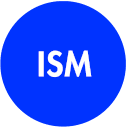The ISM IT Resume Guide
How to write a technical resume that’ll get you hired
These resume tips work for all IT jobs that require skills in development (coding), business analysis and design, infrastructure and administration, implementation (system configuration and deployment), support, and/or IT management. The guidelines can also be used for more creative roles (graphic designer, UI designer, etc.), but there are also other options for those jobs which actually showcase visual or presentation skills.
Some basic formatting rules:
- We’re in Asia. Make sure the document size in Word is set as A4 (not “Letter”).
- Use one font (per language) not a lot of different ones, and no more than two font sizes. A font size of 11 or 12 points is generally a good choice. Anything smaller than 10 is too small to read. You can use bold to highlight especially relevant words or phrases…but don’t overdo it, or it loses its impact.
- Be consistent with spacing and alignment (tip: use tabs, not spaces to make sure paragraphs line up correctly). Using 6-point paragraph spacing between some sections (like between these bullets) can make the resume more readable without wasting space.
- Keep the overall layout simple and not too crowded. Leave some white space and use comfortable margins. Make it obvious where to look for information.
Unless you are asked for one, including a photo (at the top) is a personal decision. But if you do add a picture, do NOT make it an old, fuzzy picture in your graduation gown. It should be a clean, current, professional looking image (even if taken with your phone), showing either head and shoulders or just your face. Like a passport picture but not so formal – look confident, and don’t be afraid to smile!
Save the resume as a pdf for sending to employers, but keep the Word version, because some companies and recruiters may request that.
Remember that the purpose of your technical resume is to get you an in-person interview. It does NOT need to be a deeply detailed document describing every program you have ever written, every course you’ve taken, every meal you’ve eaten… (Here’s another tip: no one in HR will read it that carefully anyway). BUT keeping it short and sweet does NOT mean that you should leave out important, meaningful, and relevant information.
If you have just two or three jobs to describe, you can probably keep the resume to one page. If you have 10+ years of work experience, an effective summary might need two, or even three full pages, and that’s OK. The important thing is WHAT you describe, not the length of the document.
Don’t include general phrases like “team player”. (Do you think any employer is ever looking for the opposite? Have you ever seen a job ad that says “must be an anti-social loner”?) On the other hand if you have actual team leadership experience, i.e. you’ve been responsible for the performance of a group, you’ve delegated tasks, mentored subordinates, etc., then definitely include that in your job descriptions.
Read the sample resumes which follow the template – see how they tell a story? With a list of core skills, a short and relevant summary, and just a few key examples in the description of each job, someone can quickly understand the “arc” of your career, your strongest skills, and whether or not you might be a good fit for a particular company and position. Click here to download sample resumes
